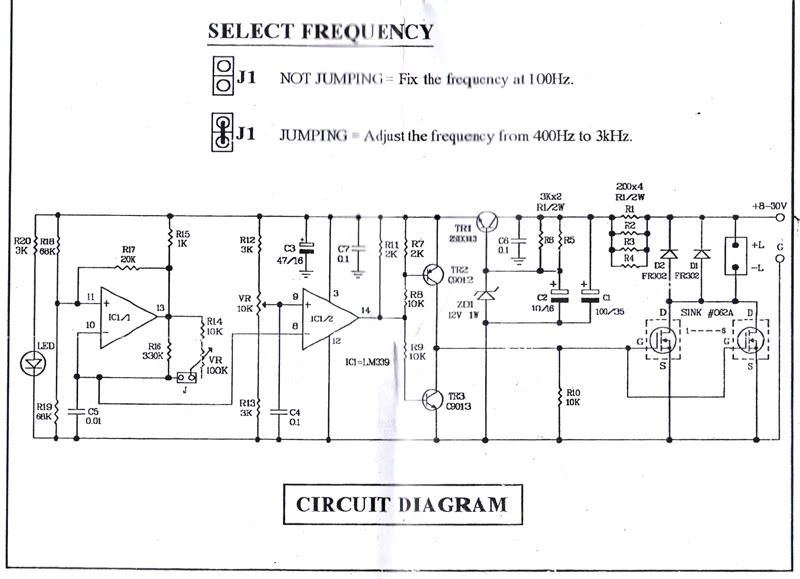FF Cell
Yes the first stuff he (wrote or video'd) explained, in there was a certain PWM from ebay but it makes no difference what PWM it is in that the PWM must handle a high continuous current and this should equate to a very high pulsed current.
Looking into this I found the MX068 model was the same.
Then he stated he modified it to 15hz. Changed the mosfets to a stronger size (higher current) even though the mosfets on this unit could handle an enormous amount of pulsed current he went slightly higher.
Lets see if I can find this: (no) if its available it is now harder to find.
Watching this FF stuff real thorough right from the beggining and everytime I posted a find (on Yahoo group) he pulled video's and he pulled answered email texts at his you-tube and anywhere else. I saved some things like pictures (and he pulled pictures too!) but the video's were not saved. He edited out this information. Have no clue why as he was going to be open source at first.
Anyways take my word or not its a fact the PWM was modified for 15hz and the mosfets exchanged out as he stated this information at the beginning. (I swear on the BIBLE).
That field is so close to the 14.3hz Schuman Resonance which are EARTH magnetic field resonant frequencies (check Wiki). Pulsing a magnetic coil at these Schuman resonant frequency's will show you that the magnetic field becomes its full strength at those peaks. Thats a real easy to test and nice to see.
Now the e-coils on bottom of the tubes were also mentioned in the beginning and trying to find this info, it seems its not available. I'll email you a picture if you want and copy's of my early emails with the information I found before it was edited out. He doesn't show the full coil on bottom because its in the epoxy but the pictures were high enough resolution to blow up 400% and see the wires. Besides that he stated this a s a fact at the beginning.
The info was pulled because the open source now changed to an upcoming e-book, which for all I know could change too. I'll have to check my sent email folder when I had first sent this information.
Yes the first stuff he (wrote or video'd) explained, in there was a certain PWM from ebay but it makes no difference what PWM it is in that the PWM must handle a high continuous current and this should equate to a very high pulsed current.
Looking into this I found the MX068 model was the same.
Then he stated he modified it to 15hz. Changed the mosfets to a stronger size (higher current) even though the mosfets on this unit could handle an enormous amount of pulsed current he went slightly higher.
Lets see if I can find this: (no) if its available it is now harder to find.
Watching this FF stuff real thorough right from the beggining and everytime I posted a find (on Yahoo group) he pulled video's and he pulled answered email texts at his you-tube and anywhere else. I saved some things like pictures (and he pulled pictures too!) but the video's were not saved. He edited out this information. Have no clue why as he was going to be open source at first.
Anyways take my word or not its a fact the PWM was modified for 15hz and the mosfets exchanged out as he stated this information at the beginning. (I swear on the BIBLE).

That field is so close to the 14.3hz Schuman Resonance which are EARTH magnetic field resonant frequencies (check Wiki). Pulsing a magnetic coil at these Schuman resonant frequency's will show you that the magnetic field becomes its full strength at those peaks. Thats a real easy to test and nice to see.
Now the e-coils on bottom of the tubes were also mentioned in the beginning and trying to find this info, it seems its not available. I'll email you a picture if you want and copy's of my early emails with the information I found before it was edited out. He doesn't show the full coil on bottom because its in the epoxy but the pictures were high enough resolution to blow up 400% and see the wires. Besides that he stated this a s a fact at the beginning.
The info was pulled because the open source now changed to an upcoming e-book, which for all I know could change too. I'll have to check my sent email folder when I had first sent this information.


Comment